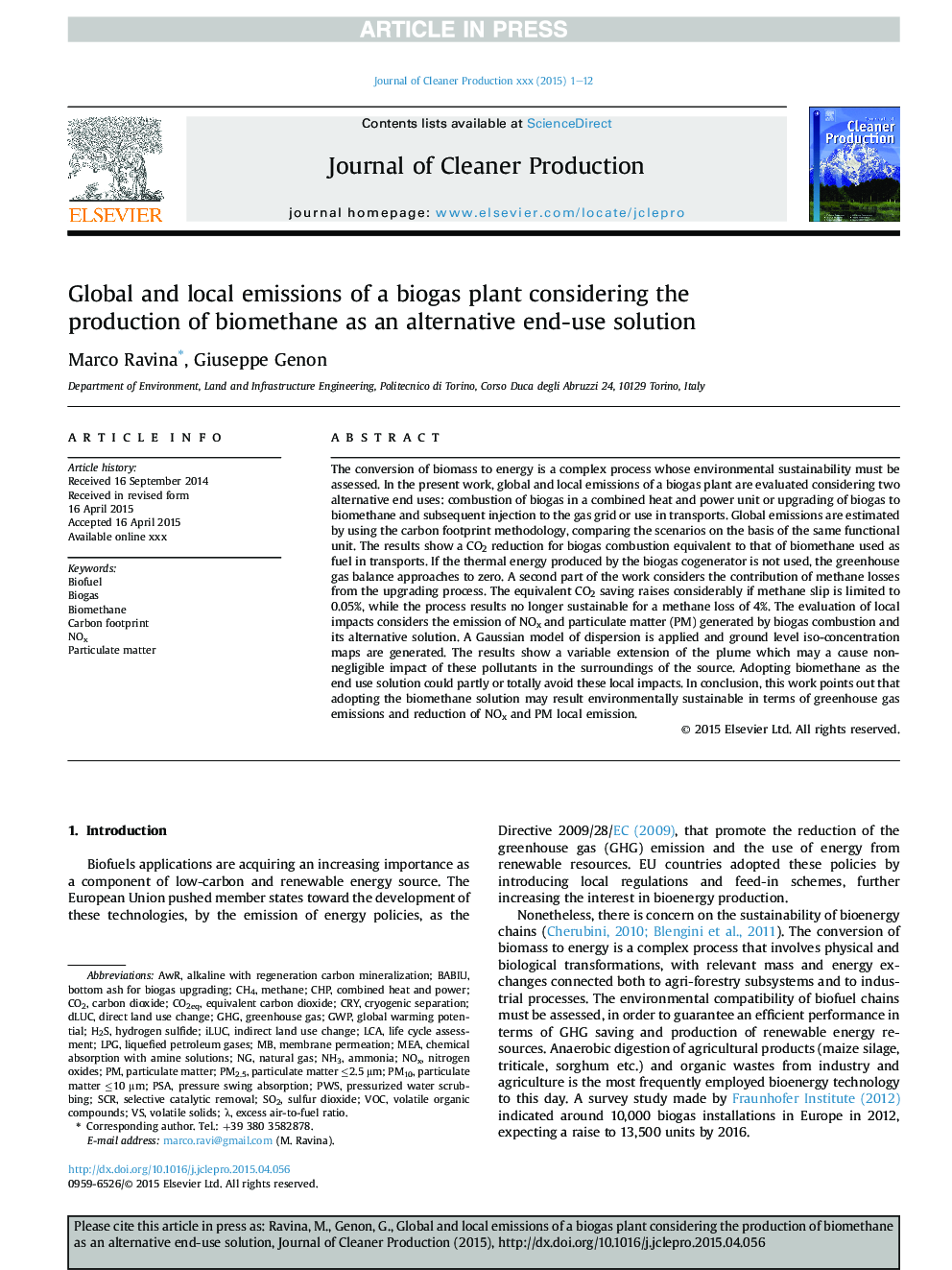| Article ID | Journal | Published Year | Pages | File Type |
|---|---|---|---|---|
| 8103777 | Journal of Cleaner Production | 2015 | 12 Pages |
Abstract
The conversion of biomass to energy is a complex process whose environmental sustainability must be assessed. In the present work, global and local emissions of a biogas plant are evaluated considering two alternative end uses: combustion of biogas in a combined heat and power unit or upgrading of biogas to biomethane and subsequent injection to the gas grid or use in transports. Global emissions are estimated by using the carbon footprint methodology, comparing the scenarios on the basis of the same functional unit. The results show a CO2 reduction for biogas combustion equivalent to that of biomethane used as fuel in transports. If the thermal energy produced by the biogas cogenerator is not used, the greenhouse gas balance approaches to zero. A second part of the work considers the contribution of methane losses from the upgrading process. The equivalent CO2 saving raises considerably if methane slip is limited to 0.05%, while the process results no longer sustainable for a methane loss of 4%. The evaluation of local impacts considers the emission of NOx and particulate matter (PM) generated by biogas combustion and its alternative solution. A Gaussian model of dispersion is applied and ground level iso-concentration maps are generated. The results show a variable extension of the plume which may a cause non-negligible impact of these pollutants in the surroundings of the source. Adopting biomethane as the end use solution could partly or totally avoid these local impacts. In conclusion, this work points out that adopting the biomethane solution may result environmentally sustainable in terms of greenhouse gas emissions and reduction of NOx and PM local emission.
Keywords
GWPCO2eqdLUCPWSPSAVOCNH3GHGCH4PM10H2SPM2.5LPGCHPMEABiomethaneiLUCNOxAmmoniaLCALife Cycle AssessmentNitrogen oxidesBiogasCombined Heat and PowerVolatile organic compoundsIndirect land use changeDirect land use changevolatile solidsCryogenic separationSulfur dioxideSO2Carbon dioxideparticulate matterCarbon footprintAWRBiofuelHydrogen sulfideMethaneMembrane permeationglobal warming potentialCO2Natural gasGreenhouse gasCrySCR
Related Topics
Physical Sciences and Engineering
Energy
Renewable Energy, Sustainability and the Environment
Authors
Marco Ravina, Giuseppe Genon,
